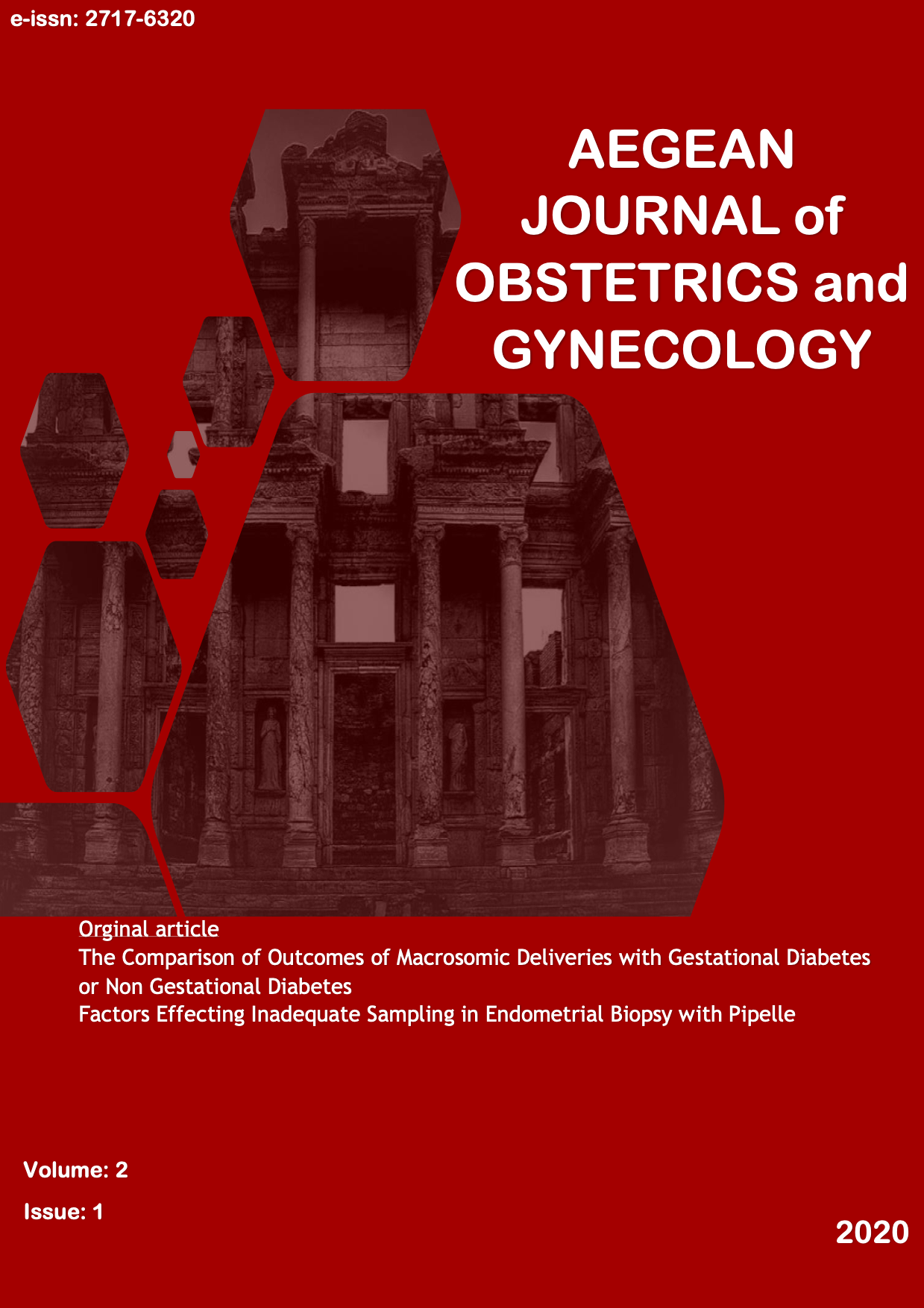Sonographic and Histologic Outcomes of Adnexal Torsion
DOI:
https://doi.org/10.46328/aejog.v2i1.32Keywords:
adnexal torsion, ultrasonography, surgical treatmentAbstract
Objective: The aim of this study was to investigate the success of ultrasound in the diagnosis of adnexal torsion before surgery and to define its histological diagnosis and results in different age periods.
Material and Methods: This study was carried out with a retrospective examination of 130 patients clinically suspected as adnexal torsion between January 2008 and May 2012. The success of sonography in the diagnosis of adnexal torsion was investigated by diagnostic tests. 70 cases confirmed by surgery were divided into 3 groups. Children and adolescents under 18 years of age were classified as Group 1, reproductive women Group 2 and postmenopausal women Group 3. In these 3 groups, mass size, type, histological diagnosis and outcome of adnexal torsion were defined.
Results: The sensitivity, specificity, and accuracy of ultrasound were 84.3%, 78.3%, and 81.5%, respectively. There were significant differences in the presence of ultrasonic hallmarks among the true positive, false positive, and false negative cases of adnexal torsion. Adnexal torsion was identified in 70 cases. The majority of cases were found to occur in the reproductive period (47 of 70). Teratoma was the most common histological diagnosis in children and adolescents, while normal ovary was in the reproductive period. In the postmenopausal period, the most common histological diagnosis was cystadenoma, but the malignant ovarian tumor was observed in 2 of 10 cases.
Conclusion: We conclude that ultrasonography performed by a specialized obstetrics and gynaecology ultrasound unit plays an important role in the preoperative diagnosis of adnexal torsion. Most adnexal torsions occurred in women of reproductive age, and the right side was dominant. The spectrum of histological diagnosis varied at different ages.
Downloads
Published
Issue
Section
License
Copyright (c) 2020 Aegean Journal of Obstetrics and Gynecology

This work is licensed under a Creative Commons Attribution-NonCommercial 4.0 International License.
AEJOG is an open-access journal which means that through the internet; freely accessible, readable, downloaded, copied, distributed, printed, scanned, linked to full texts, indexed, transferred to the software as data and used for any legal purpose, without financial, legal and technical obstacles. The only authority on reproduction and distribution and the sole copyright role in this field; has been given to authors therefore they can have control over the integrity of their work, so that they are properly recognized and cited. This is in accordance with the BOAI definition of open access.
The content in Aegean Journal of Obstetrics and Gynecology (AEJOG) is protected by copyright. All copyrights of the submitted articles are transferred to the Aegean Journal of Obstetrics and Gynecology within the national and international regulations at the beginning of the evaluation process. Upon submission of their article, authors are requested to complete an assignment of copyright release form. Authors should acknowledge that they will not submit their manuscript to another journal, publish in any other language, or allow a third party to use the article without the written consent of the Aegean Journal of Obstetrics and Gynecology. When an article is published on AEJOG, it is read and reused for free as soon as it is published under a Creative Commons Attribution-NonCommercial 4.0 (CC BY NC 4.0) license. In case the article is rejected, all copyrights are given back to the authors.
The content of the article and all legal proceedings against the journal, if any, are the responsibility of the author. In addition, all financial and legal liability for the copyright of the presented tables, figures and other visual materials protected by law belongs to the authors. It is the responsibility of the corresponding author to report authors scientific contributions and responsibilities regarding the article. In case of any conflict of interest, it is the responsibility of the authors to indicate the conflict of interest in the Disclosure part of the article. Author names will be published as they are listed on the submitted Title page.




